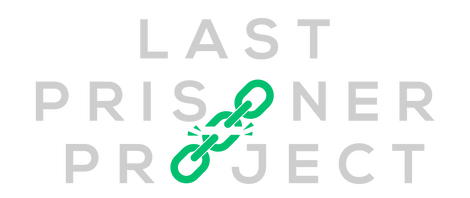Exactly how many people are locked up for weed?
The best we can do is an educated guess.

One of the most frequently asked questions we get at Last Prisoner Project is
exactly how many people are incarcerated for cannabis?
Which makes sense. After all, how can you solve a problem if you don’t know its true scale? Unfortunately, thanks to our complex and oftentimes impenetrable hodgepodge of local, state and federal criminal justice databases nobody—not even the federal government—is privy to that exact number.
All that to say, the best we can do is dig into a bunch of different publicly-available data sources and make an educated guess.
When the Last Prisoner Project was first founded, we often relied on the number 40,000. That estimate is based loosely on a 2007
Bureau of Justice Statistics report that broke out state and federal incarcerated populations by substance-specific drug offenses.
However, that report is based on data gathered in 2004. Fortunately, in March of 2021, a few statisticians from the BJS
released a new report using data gathered in 2018. And if you apply the earlier report’s substance-specific drug offense proportions to the new report’s updated state and federal prison population figures, you’d conclude that there around 32K cannabis prisoners (~22K state cannabis prisoners and ~10K federal facilities).
So why don’t we say there are 32K cannabis prisoners in the United States?
A few reasons.
- More recent and rigorously-sourced reports estimate that roughly 3,000 people would be released from federal custody were cannabis reform bills like the STATES Act to become law. And while those pieces of analysis don’t account for every federal “cannabis prisoner”, we can still use them as a baseline from which to infer that there are fewer than ~10K people incarcerated on the federal level for marijuana. Why the discrepancy? As we’re all well-aware, the country’s approach to marijuana law enforcement has shifted dramatically in the 15 years since the original report was released. The number of people arrested for marijuana—while still incredibly high—has been trending downwards over the past few years, and prosecutors are prosecuting fewer people for marijuana (and seeking shorter prison terms for those who they do). This tends to be particularly true on the federal level (that said, recently-released DEA data has shown that trend isn't absolute). Meaning simply transposing 2004’s substance-specific proportion to 2018’s prison makeup doesn’t get us to an accurate number.
So does that mean there are far fewer than 32K cannabis prisoners?
You would think so, given the number of federal cannabis prisoners—as well as marijuana arrests more broadly—have been trending downwards. Unfortunately, both the 2007 and the 2018 report share MASSIVE limitations.
The most glaring issue centers around “who” they define as a cannabis prisoner. Both reports only speak to the number of people held in long-term confinement in state and federal facilities. They
do not
account for the following categories of people.
- people incarcerated in local and county jails (a significant number, given that there were 545,602 arrests for cannabis in 2019).
- individuals currently incarcerated in our country's (1,700+) juvenile correctional facilities, Indian county jails, immigration detention centers, etc.;
- individuals incarcerated pre-trial and pre-sentencing;
- individuals that have cannabis offenses treated as secondary offense;
- individuals incarcerated in jurisdictions that don’t report their statistics to the national database (in 2021, nearly 40% of local law enforcement agencies failed to report their arrest numbers to the FBI).
- and individuals on supervised release who have been re-incarcerated due to a marijuana-related technical parole/probation violation. We know that personal drug use for individuals on supervised release is a leading cause of re-incarceration (and we know that those drug-related violations are disproportionately marijuana-related... especially in cities).
Put together, these categories of people represent MANY more people incarcerated for cannabis than those held in long-term confinement in federal and state prisons.
On top of that, both reports are plagued by
the issues surrounding any criminal justice data in the United States, which are subject to
under and/or
misreporting for other reasons. Some of these reasons include, but are not limited to;
- The implications of different record-keeping requirements across local, state, federal, and tribal systems, record loss/destruction, dirty data, etc.
- Reporting offenses by the most serious offense category means that someone who was incarcerated for a marijuana offense may not be reported as such.
- For instance, someone selling marijuana who has a firearm in their home may be reported as a weapons offense rather than a drug offense.
- Don’t even get us started on the nexus between marijuana and immigration-related violations.
- An incarcerated individual who was charged with multiple offenses after a marijuana-related arrest may have technically served the sentence of the marijuana offense, and thus is not captured in most data sets.
Given all of this, the number of individuals incarcerated for cannabis at any moment in time in the U.S. is higher than 40,000. By what magnitude? We’re not sure. But we are working day-in and day-out to move that needle down to zero.



